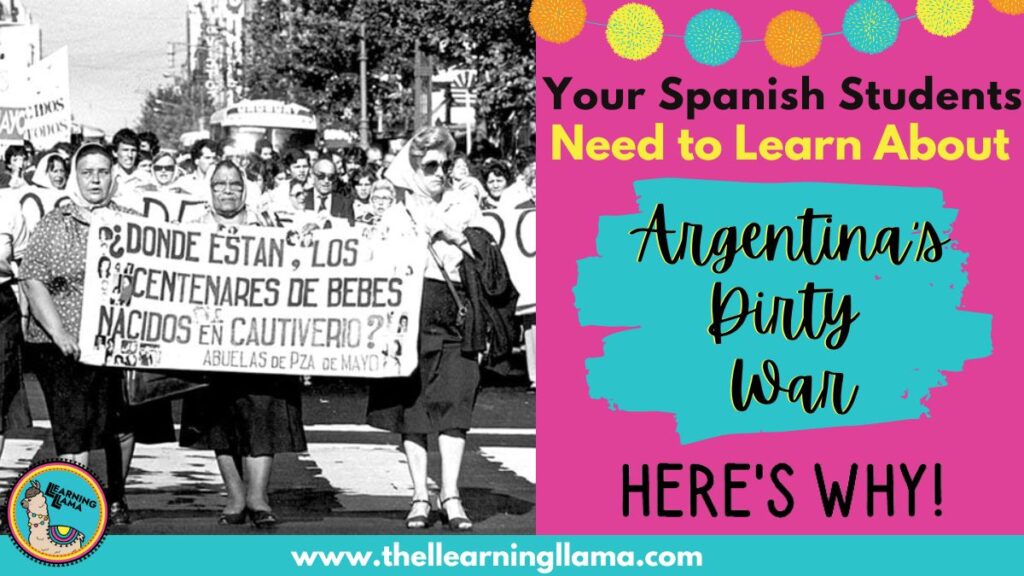I first taught about Argentina’s Dirty War in a Spanish 3 Honors course. This week of content was the most memorable lesson for my students. I remember when I said this happened in the 1970s, they were all shocked… jaws dropped that this atrocity was so recent in our world’s history, yet they had never heard about it.
So for the shock and awe factor alone, it is a powerful lesson for your students. It is a lesson that will keep them engaged from start to finish, but here are some additional reasons to make sure you add Argentina’s Dirty War into your Spanish curriculum. **Note that this is a heavy topic… a topic that requires a lot of discussion, empathy, and reflection. I recommend it for advanced level courses.**
What is Argentina’s Dirty War?
Before I dive into why Argentina’s Dirty War is so important to add to our curriculum, there is the chance that you are not well versed on this topic. Here is a brief overview of the history of the Guerra Sucia, with the main points. Once you read this, you may do a deep-dive yourself and go down a rabbit hole because there is so much to uncover and learn.
- In Argentina from 1976-1983, La Guerra Sucia took place. Due to political discontent and an economic collapse, a junta took control.
- Anybody that opposed the new militaristic junta were kidnapped, tortured or even killed. These people were liberal people that did not agree with the new government and wanted to voice their opinion.
- Some of the most common forms of torture took place in torture camps where prisoners lived in horrible conditions.
- Many of the people that were against the government were young adults, including pregnant women. The government would kidnap the pregnant women, take them to the prisons, wait until they gave birth, and then kill the mothers. The junta would steal the baby after killing the mother and father and give the baby to right-wing families or military families that agreed with the government. These children were never told about their biological parents and did not know their true identity. More than 30,000 children “disappeared.”
- Today, the disappeared are still searching for their families and over 130 have been reunited with their biological grandparents. The Abuelas de Plaza de Mayo is an organization of grandmothers that continue to search for their missing grandchildren and bring justice to the victims.
Argentina’s Dirty War is not in our history textbooks
If you start your Guerra Sucia lesson by asking students if they have ever studied this war or even heard of it, chances are 99% or even 100% will say “no.” If you go to your school’s history department and ask to flip through their history textbooks, you probably won’t see any information about this dictatorship or war either.
We have a responsibility as Spanish teachers to make our students aware of the good and bad of Hispanic culture. I tend to think of Spanish class as an avenue for teaching a variety of subjects, just in the target language. I teach lessons on artists like Frida Kahlo or Pablo Picasso just like an art teacher would, but in the target language. I’ve taught lessons on endangered animals like a biology teacher might, but in the target language. Now, is the chance to teach about Argentina’s Dirty War from a historical point of view in the target language.
Since you won’t find this in history textbooks, and it may be difficult to find information that is accessible and comprehensible for your students, I created a TPRS based lesson, complete with lots of videos, a teacher script, activities, and more here. The lesson is centered around the “story” of La Guerra Sucia, the dictatorship, the disappeared, and the abuelas. By using images and a repeated teacher script with questioning techniques (all included in the product), by the end of a few classes, your students will be able to retell the “story” of the Dirty War all on their own in Spanish!
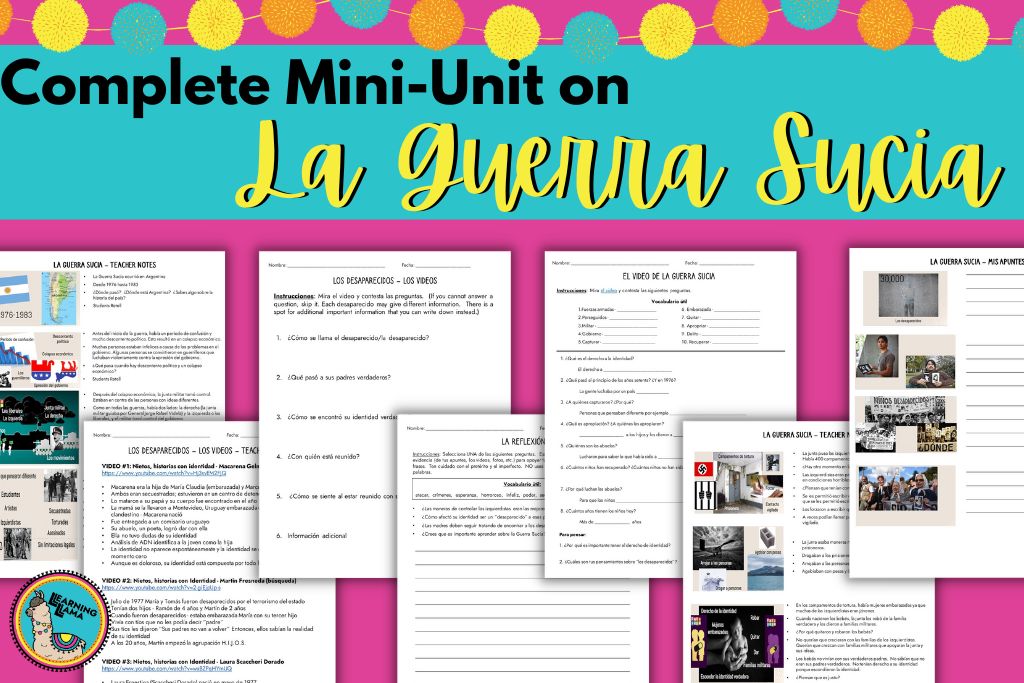
Students will develop empathy
Empathy is an important skill for our students to develop. It is a skill that we often don’t get to practice in the classroom. People tend to think of Spanish class as a vibrant, exciting, positive classroom, and while it is, there are still heavy topics for us to discuss. Think about immigration, endangered species in Latin America, and now add Argentina’s Dirty War to that list. These topics are heavy. La Guerra Sucia will provide countless opportunities for students to develop empathy, as they place themselves in the situation of these families.
Videos are one of the most powerful ways we can demonstrate the effects of Argentina’s Dirty War. This time in history is filled with raw emotion, desperation, and sadness. Our discussions and images can only “say” so much. Let these videos and resources speak for themselves. Since the Argentina Guerra Sucia happened so recently, there are some great resources online for us to share with our students.
Las Abuelas de Plaza de Mayo
The Abuelas de Plaza de Mayo are a group of grandmothers whose goal is to find and reunite biological families with the disappeared children from Argentina’s last dictatorship. The organization was founded in 1977 and is still in existence today, stronger than ever. As I write this post in January 2023, they are up to 132 grandchildren reunited with their families.
In my opinion, the videos of the Abuelas de Plaza de Mayo are extremely powerful and effective. This is one of my favorites. You will hear the concern and desperation in their voices. You can see the emotion in their eyes. These women have spent decades searching for their grandchildren, and they are far from giving up. Here is their website where you can learn more about their organization and search. On their website, you’ll also find:
- A list of recuperated grandchildren
- Short commercials perfect for the classroom, like this 40-second ad
- Testimonies from grandchildren
- News Articles announcing the successes of the Abuelas
- What to do if you doubt your identity and were born in Argentina at this time
- Much more!
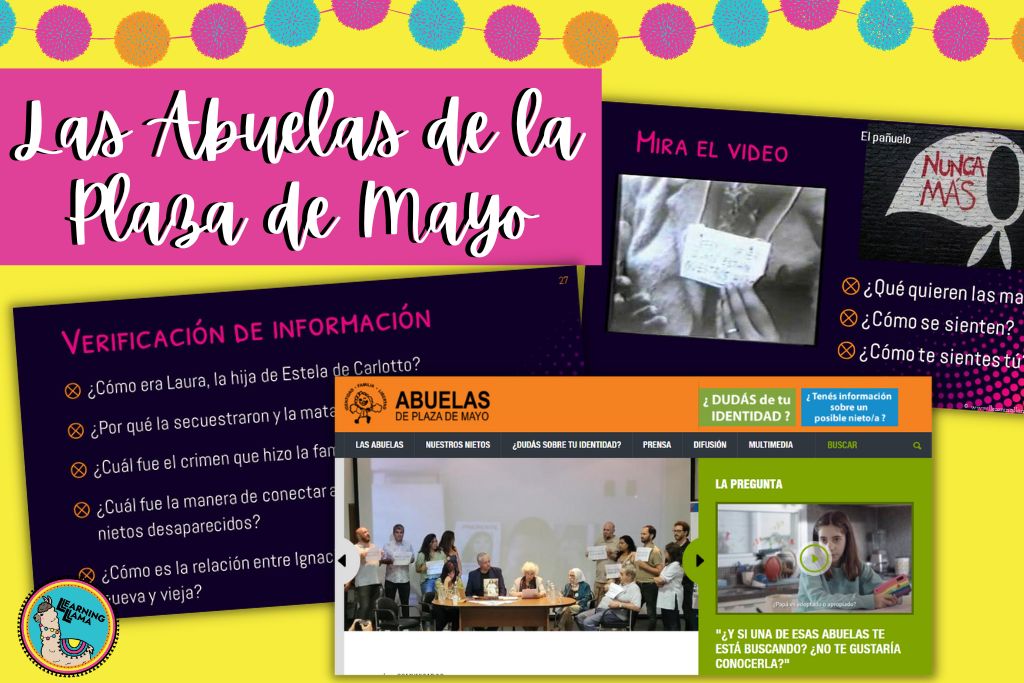
In addition to hearing from the Abuelas, let your students hear directly from the grandchildren. Some of these people are having identity crises. Do they want to know their biological family if they are happy with their current life? Will they have regrets if they don’t? There are so many concerns, but also so many happy reunions that you’ll want to show a little of both sides. A simple search on YouTube for “guerra sucia desaparecidos” will yield some videos and testimonies. But the Abuelas website under “multimedia” has great options, too.
Identify Heroes in our Society
My Guerra Sucia unit was a segue into a mini-unit on heroes and people we admire. One of the main heroes of the outcome of Argentina’s Dirty War is Estela Carlotto, the founder of the Abuelas de Plaza de Mayo. When you mention the Abuelas, take some time to highlight Estela and her contributions, as well.
A really accessible and informative YouTube channel is El Asombroso Mundo de Zamba, a Spanish language children’s show. This video makes El derecho de la identidad accessible and understandable for our students. Zamba talks with Estella Carlotto and learns all about the dictatorship, the search for grandkids, and the right to know your true identity.
If you do teach a unit on heroes or want to highlight famous Hispanic women during Women’s History Month, here is a FREE LIST of Hispanic women (Estela Carlotto is on the list.) She and countless other women have made incredible impacts on our society. Find lots of ideas for incorporating them into your curriculum on this blog post about Women’s History Month.
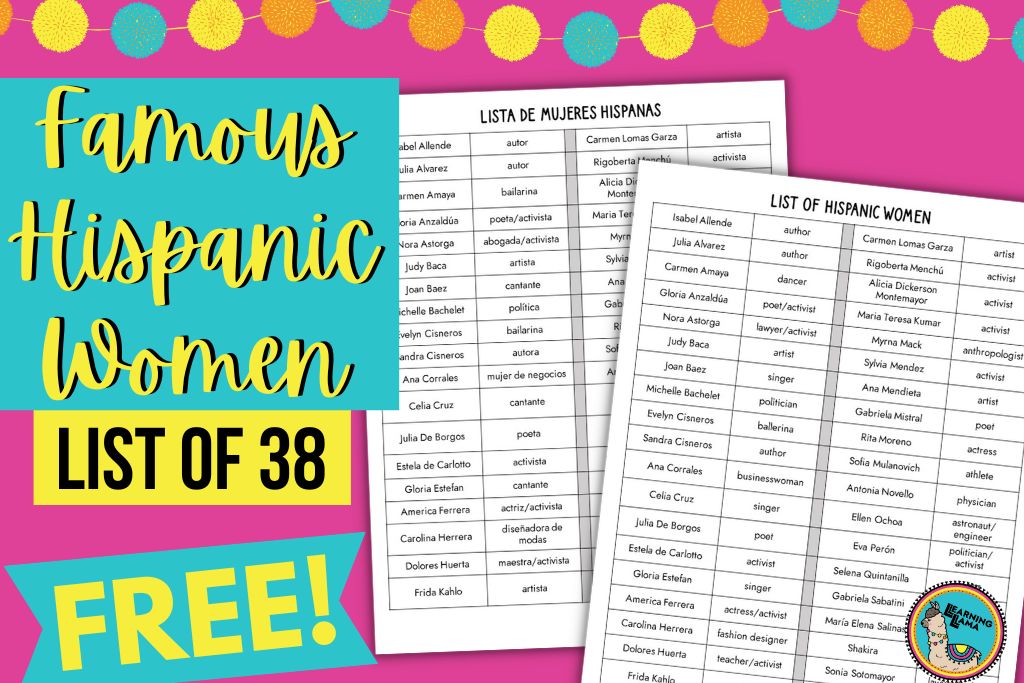
Reflect on Your Own Identity
The right to one’s own identity is the “moral” of this lesson. After you conclude teaching about the content of Argentina’s Dirty War, then you can have students reflect on their own identity. Ask them to reflect on who they really are and their family origin. But an even deeper reflection would be to have your students put themselves in the shoes of the desaparecidos. Would they want to know their real parents? After watching videos of the desaparecidos (those that choose to find their real identity and those that don’t), have a debate in class. Students will need to formulate the pros and cons of knowing your real identity and potentially losing or letting go of everything you thought was true about yourself.
After an entire unit on identity, including La Guerra Sucia, El Delantal Blanco (discussions on social class), personality quizzes, and more, I concluded with an Integrated Performance Assessment on stolen identity. This allowed students to tie in everything we discussed over the past few months, especially the thought of losing your own identity.
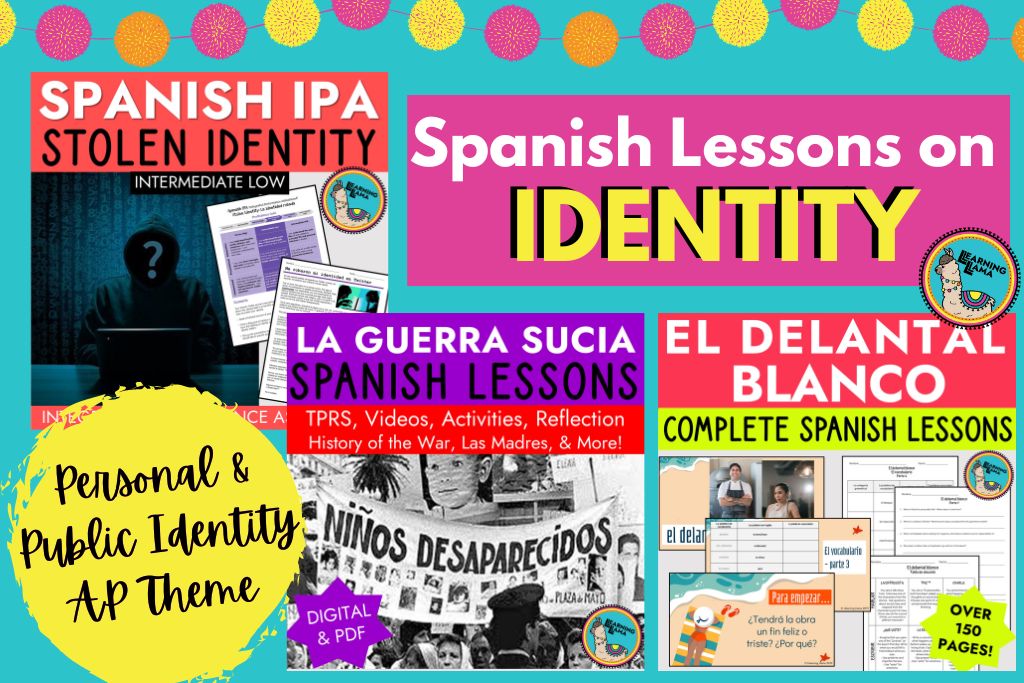
Extra resources to learn more about Argentina’s Dirty War
Books
This TPRS reader, La Guerra Sucia, is for advanced levels, probably 3 and up. It is a riveting story about an American Journalist and single mother, Leslie Corrales, who travels to Argentina to investigate a suspicious disappearance, and then discovers the horrific atrocities of tens of thousands of other suspected dissidents.
The Lady from Buenos Aires is a novel in English about a detective hired to help a family uncover the disappearance and secrets of the Dirty War. I found this book at a library book sale and found it to be a great read, even though fictitious. It highlights the emotions and web of deceit accompanied in a search for loved ones.
Movies
Argentina, 1985 is inspired by the true story of a legal team of unlikely heroes in their battle to prosecute Argentina’s bloodiest military dictatorship against all odds and in a race against time to bring justice to the victims of the Military Junta. Now a Golden Globe® nominee for Best Picture!
I first saw Cautiva while taking a Spanish course in college. I was captivated by this film and the events the ,main character endures. It tells the story of Christina who is told her name is really SOfía and she is the daughter of activists who disappeared in the 1970s. She is forced to question everything she once thought true and embark on a journey to find her true identity.
La Historia Oficial follows the lives of a couple and their adopted child, as it brings to light the abuses in the adoption practices during La Guerra Sucia. It is a tear-jerker and a movie that has won many awards including an Oscar for Best Foreign Film.
Classroom Resources
La Guerra Sucia TPRS Lessons
This is the unit I created to teach about La Guerra Sucia. It comes complete with a TPRS lesson, including a teacher script, images, activities, videos, and reflection activities. Your students will comprehend the atrocities of this war in a comprehensible and meaningful way. You won’t have to lift a finger – all the lessons are detailed and done for you! Your students will thank you for sharing the content with them in a way that allows them to understand it and retell the story in their own words in the target language.
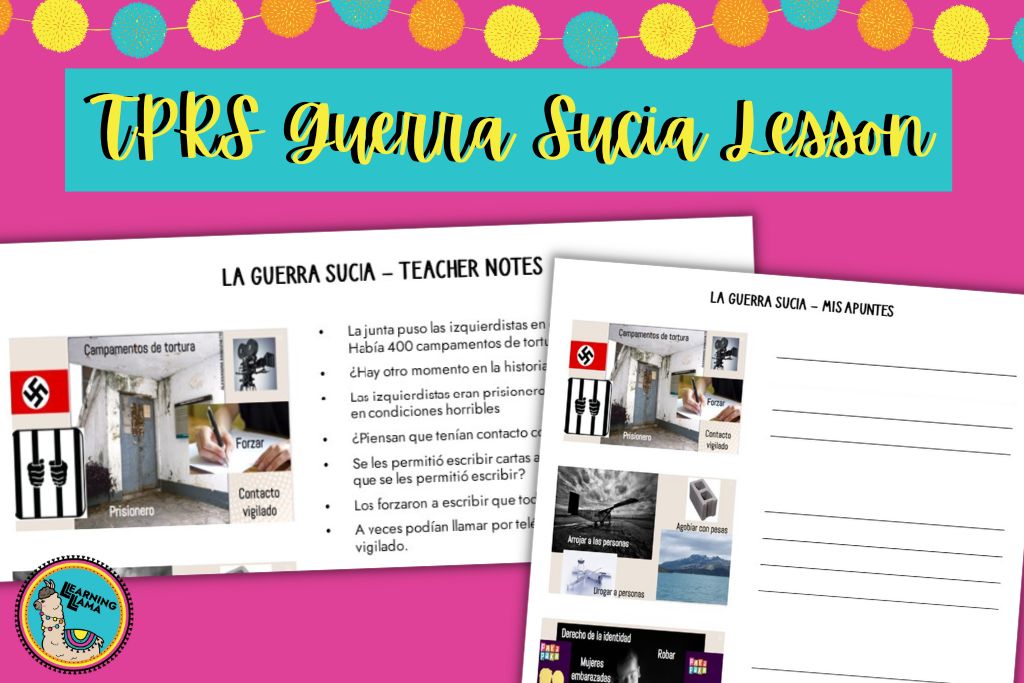
Argentina Facts & Readings
Before you begin teaching about Argentina’s Dirty War, you may want to introduce your students to modern day Argentina, its geography, culture, and other fun facts. It is a great way to ease into this heavy topic by first providing some context into the country.
- Here are 10 fun facts about Argentina, you can get in either Spanish or English. You can use these as a daily Do Now or intro during your Guerra Sucia unit!
- Here is a reading with activities about 5 attractions in Buenos Aires, including La Plaza de Mayo.
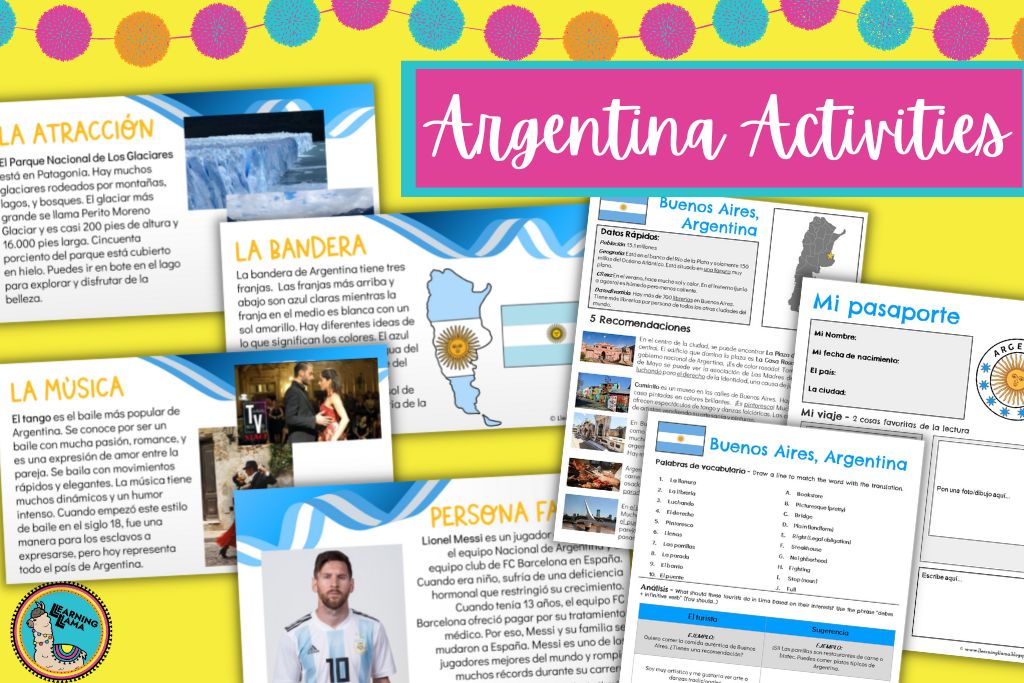
Your students need to learn about La Guerra Sucia. They will learn about something that is not traditionally in textbooks; they will develop empathy, and they will even get the chance to reflect on their own identity, something they hopefully won’t take for granted anymore.

